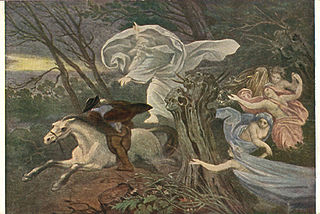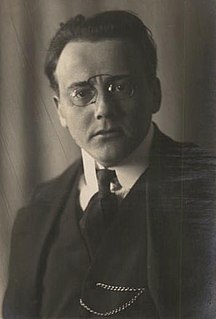
"Das Veilchen" ("The Violet"), K. 476, is a song for voice and piano by Wolfgang Amadeus Mozart, written in Vienna on 8 June 1785, to a poem by Johann Wolfgang von Goethe.

"Das Veilchen" ("The Violet"), K. 476, is a song for voice and piano by Wolfgang Amadeus Mozart, written in Vienna on 8 June 1785, to a poem by Johann Wolfgang von Goethe.
Goethe wrote the poem in 1773 or early 1774. It was first published[ citation needed ] in March 1775 in his first Singspiel Erwin und Elmire which was first set to music in 1775 by the German composer Johann André (a revival in 1776 used music by Anna Amalia of Brunswick-Wolfenbüttel and by Carl David Stegmann, and another 1785 had music by Ernst Wilhelm Wolf and Karl Christian Agthe).
In 1771, Goethe had written the poem "Heidenröslein" which tells of a young man's plucking of a feisty rose. In "Das Veilchen" it is a careless girl who destroys a violet, a metaphor for a young man's heart.
Ein Veilchen auf der Wiese stand, | A violet in the meadow stood, |
| Mozart added the following line to the end of his setting: | |
| Das arme Veilchen! es war ein herzigs Veilchen. | Poor little violet! It was the sweetest violet. |
This song is Mozart's only setting to a text by Goethe. It not clear where exactly Mozart encountered the poem, but is likely through one of its settings by other composers of the time[ citation needed ]. Mozart made a telling addition by adding his last line.
The poem is written in three stanzas, but instead of using strophic form, Mozart creates a through-composed work, demonstrating his careful attention to the words of the poet by creating a different mood for each verse. [1] At the end of the song, the composer recalls the opening line in a touching 5-bar coda. [2]
The piece is 65 bars long and a performance lasts about 2+1⁄2 minutes. Its key signature is G major; its meter is 2/4. The vocal range covers only the interval of a ninth, from F4 to G5.
The piece starts with a 6-bar introduction of the melody of the first line by the piano. The first stanza takes up the next 15 bars. The entry of the shepherdess is marked by a modulation to D major; this is followed by a four-bar segment which summarises the violet's happy mood – and a general pause which precedes the mood swing of the second verse, a change of key to G minor to describe the violet's longing. There is a modulation to the relative major B-flat major in the latter part of that verse when the violet expresses hope of being loved back, but ending in a falling phrygian lament. The narration of the third verse is a recitativo accompagnato in E-flat major culminating in the trampling of the violet which is emphasised by a following general pause. The dying flower is described by a chromatically falling line, before the final modulation back to G major changes the pain into jubilation: to die at the beloved's feet. Then Mozart adds two phrases of his own as a coda; in recitative, in free time and using only two notes: "Das arme Veilchen!" (Poor little violet!), a long general pause, and closing the song a tempo with a quotation from the third line: "es war ein herzigs Veilchen." (it was the sweetest violet.)
Other composers who have set this poem to music (besides those mentioned above as composers of Goethe's singspiel) include Philipp Christoph Kayser (1776), Anton Schweitzer (1777), Joseph Anton Steffan (1779), Johann Friedrich Reichardt in 1780 and in 1783, (the second setting was praised by Clara Kathleen Rogers and Felix Mendelssohn) Karl Siegmund von Seckendorff (1779), Friedrich Heinrich Himmel (c. 1807), Peter Josef von Lindpaintner (1815), Václav Tomášek (1815), Carl Gottlieb Reissiger (1827), Clara Schumann (1853), Nikolai Medtner (1909), and Othmar Schoeck (1915). Musical settings in other languages include the composers Halfdan Kjerulf to a Danish translation by Adam Oehlenschläger, Johan Erik Nordblom to a Swedish text, and an English version by Clara Kathleen Rogers.

Johann Carl Gottfried Loewe, usually called Carl Loewe, was a German composer, tenor singer and conductor. In his lifetime, his songs were well enough known for some to call him the "Schubert of North Germany", and Hugo Wolf came to admire his work. He is less known today, but his ballads and songs, which number over 400, are occasionally performed.

"Dies irae" is a Latin sequence attributed to either Thomas of Celano of the Franciscans (1200–1265) or to Latino Malabranca Orsini, lector at the Dominican studium at Santa Sabina, the forerunner of the Pontifical University of Saint Thomas Aquinas in Rome. The sequence dates from the 13th century at the latest, though it is possible that it is much older, with some sources ascribing its origin to St. Gregory the Great, Bernard of Clairvaux (1090–1153), or Bonaventure (1221–1274).

"Gott erhalte Franz den Kaiser" was a personal anthem to Francis II, Emperor of the Holy Roman Empire and later of the Austrian Empire, with lyrics by Lorenz Leopold Haschka (1749–1827) and music by Joseph Haydn. It is sometimes called the "Kaiserhymne". Haydn's tune has since been widely employed in other contexts: in works of classical music, in Christian hymns, in alma maters, and as the tune of the "Deutschlandlied", the national anthem of Germany.

The Piano Concerto No. 20 in D minor, K. 466, was composed by Wolfgang Amadeus Mozart in 1785. The first performance took place at the Mehlgrube Casino in Vienna on 11 February 1785, with the composer as the soloist.

"Erlkönig" is a poem by Johann Wolfgang von Goethe. It depicts the death of a child assailed by a supernatural being, the Erlking, a king of the fairies. It was originally written by Goethe as part of a 1782 Singspiel, Die Fischerin.

"Ellens dritter Gesang", in English: "Ellen's Third Song", was composed by Franz Schubert in 1825 as part of his Op. 52, a setting of seven songs from Walter Scott's 1810 popular narrative poem The Lady of the Lake, loosely translated into German.

"Der Tod und das Mädchen", D 531; Op. 7, No. 3, is a lied composed by Franz Schubert in February 1817. It was published by Cappi und Diabelli in Vienna in November 1821. The text is derived from a poem written by German poet Matthias Claudius. The song is set for voice and piano.

"Heidenröslein" or "Heideröslein" is a poem by Johann Wolfgang von Goethe, published in 1789. It was written in 1771 during Goethe's stay in Strasbourg when he was in love with Friederike Brion, to whom the poem is addressed. The episode is the inspiration for Franz Lehár's 1928 operetta Friederike, which includes a setting of "Heidenröslein" by Lehár.

Corona Elisabeth Wilhelmine Schröter was a German musician best known as a singer. She also composed songs, setting texts by Friedrich Schiller and Johann Wolfgang von Goethe to music.

"Als Luise die Briefe ihres ungetreuen Liebhabers verbrannte", K. 520, is a song for piano and voice (soprano) by Wolfgang Amadeus Mozart to a poem by Gabriele von Baumberg.

Pauline Duchambge née de Montet was a French pianist, singer, and composer.

Adelaide, Op. 46, is a song for solo voice and piano composed in about 1795 by Ludwig van Beethoven. The text is a poem in German by Friedrich von Matthisson (1761–1831).

Hermann Zilcher was a German composer, pianist, conductor, and music teacher. His compositional oeuvre includes orchestral and choral works, two operas, chamber music and songs, études, piano works, and numerous works for accordion.

"Traum durch die Dämmerung", is both a German poem by Otto Julius Bierbaum and a Lied by Richard Strauss, his Op. 29/1. The opening line is "Weite Wiesen im Dämmergrau". It is the first of three songs by Strauss based on love poems by Bierbaum, composed and published in Munich in 1895, and dedicated to Eugen Gura. The works were scored for medium voice and piano, and published by Universal Edition as 3 Lieder mit Klavierbegleitung, later with English versions and orchestral arrangements.

"Beim Auszug in das Feld", K. 552, is a military-patriotic song, composed for tenor voice and piano accompaniment by Wolfgang Amadeus Mozart. The title may be translated "On going forth to the field".

"Harzreise im Winter" is a poem by Johann Wolfgang von Goethe, inspired by his ascent of the Brocken in the Harz mountains during the winter of 1777. He reached the summit in the heat of midday, in deep snow, with the landscape below him shrouded in cloud. The Brocken had always been a place of mystery, connected with witches and devils; where illusions such as the Brocken spectre might confuse an unwary traveller, and where few ventured by choice. This was the inspiration and the setting for his poem.

"An Chloe", K. 524, is a composition for voice and piano by Wolfgang Amadeus Mozart to a poem by Johann Georg Jacobi. Mozart composed it on 24 June 1787 in Vienna.

"Gesang der Geister über den Wassern" is a 1779 poem by Johann Wolfgang von Goethe (1749–1832). It may be best known in the English-speaking world through a musical setting of 1820–21 by Franz Schubert (1797–1828) as a part song for men's voices and low strings (D.714).
Philipp Christoph Kayser was a German pianist, composer, orchestra musician, music teacher and poet. He was a close friend of Johann Wolfgang von Goethe.
"Das Traumbild", K. 530, is a song, or Lied, for piano and voice by Wolfgang Amadeus Mozart to a poem by Ludwig Hölty.
| German Wikisource has original text related to this article: |